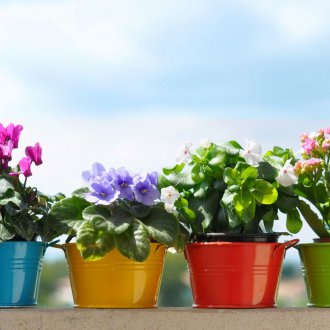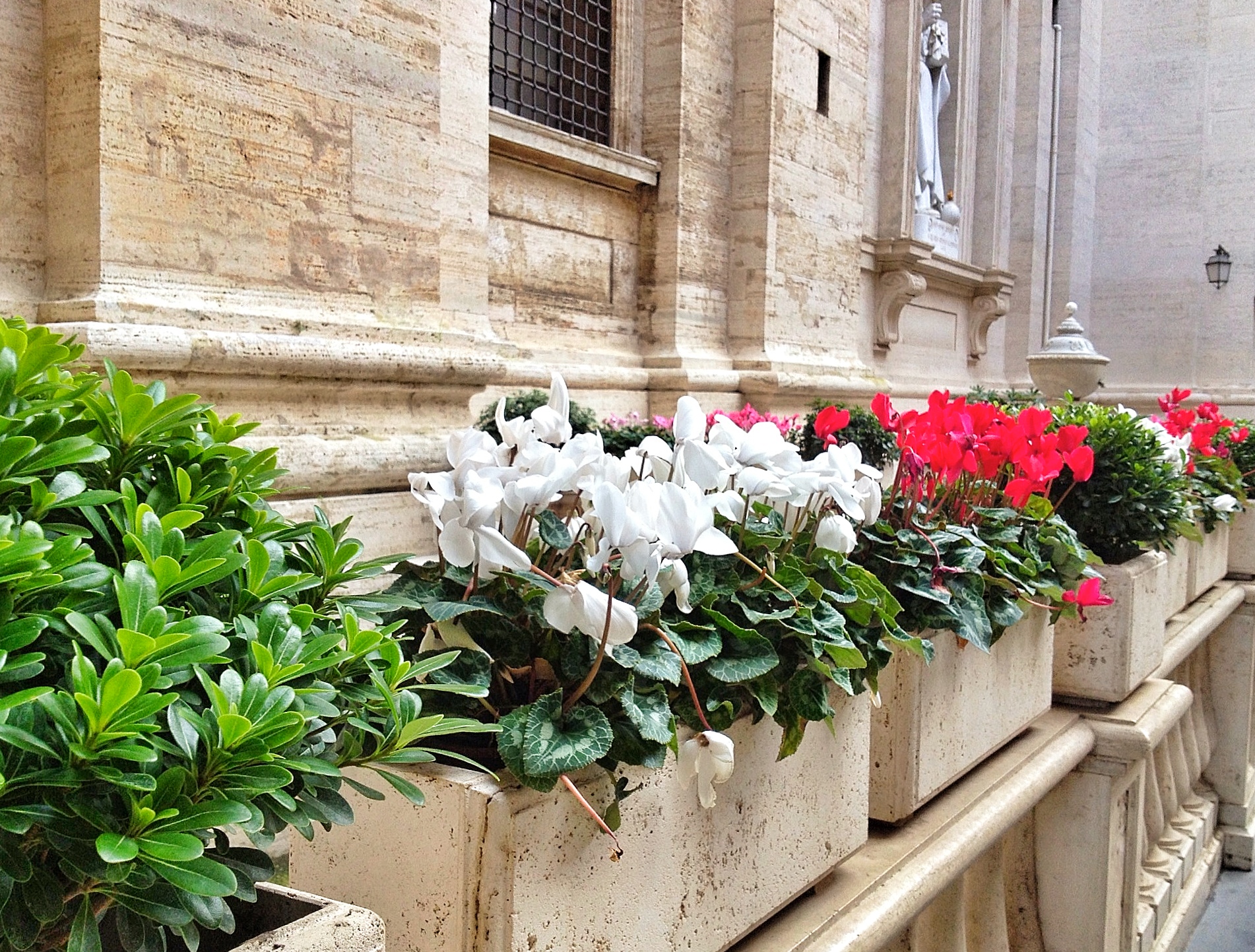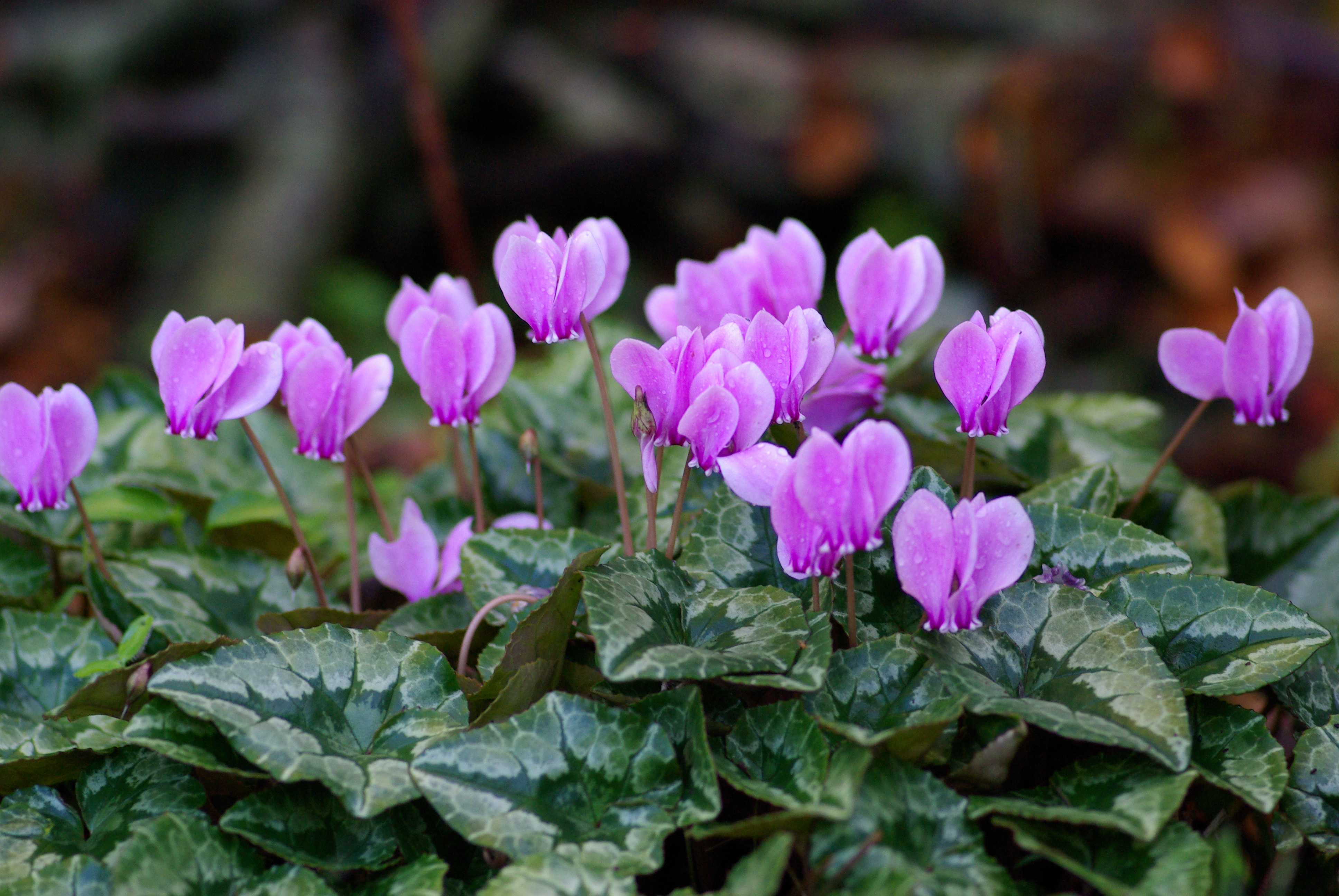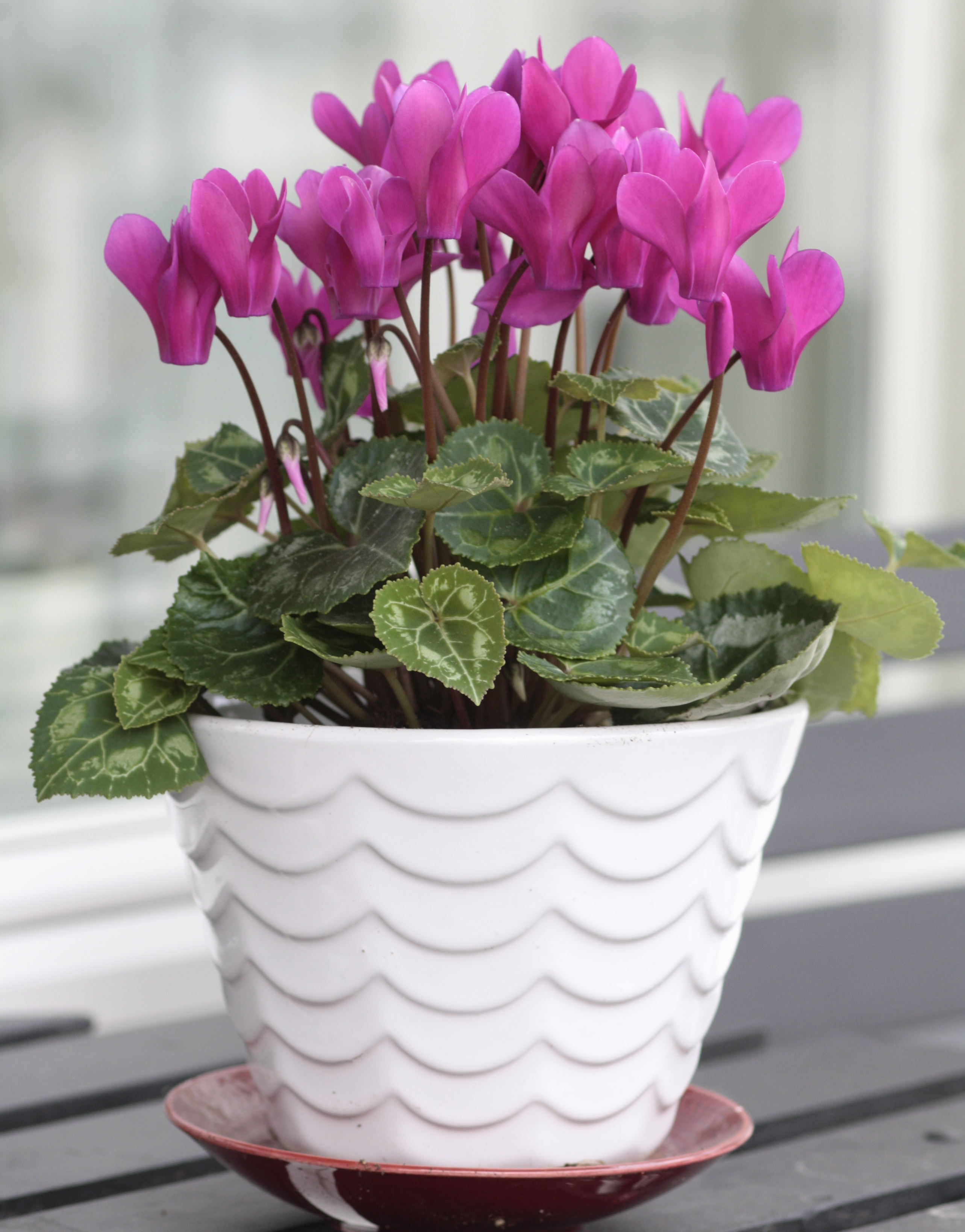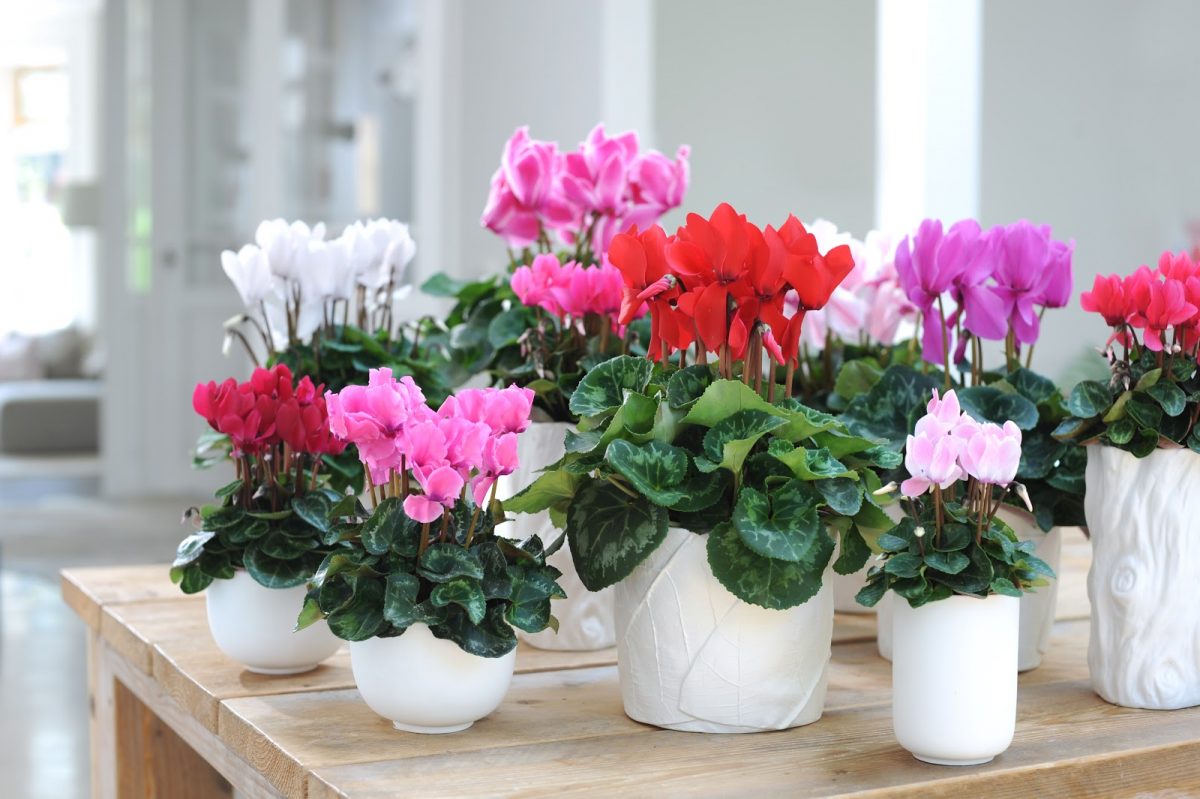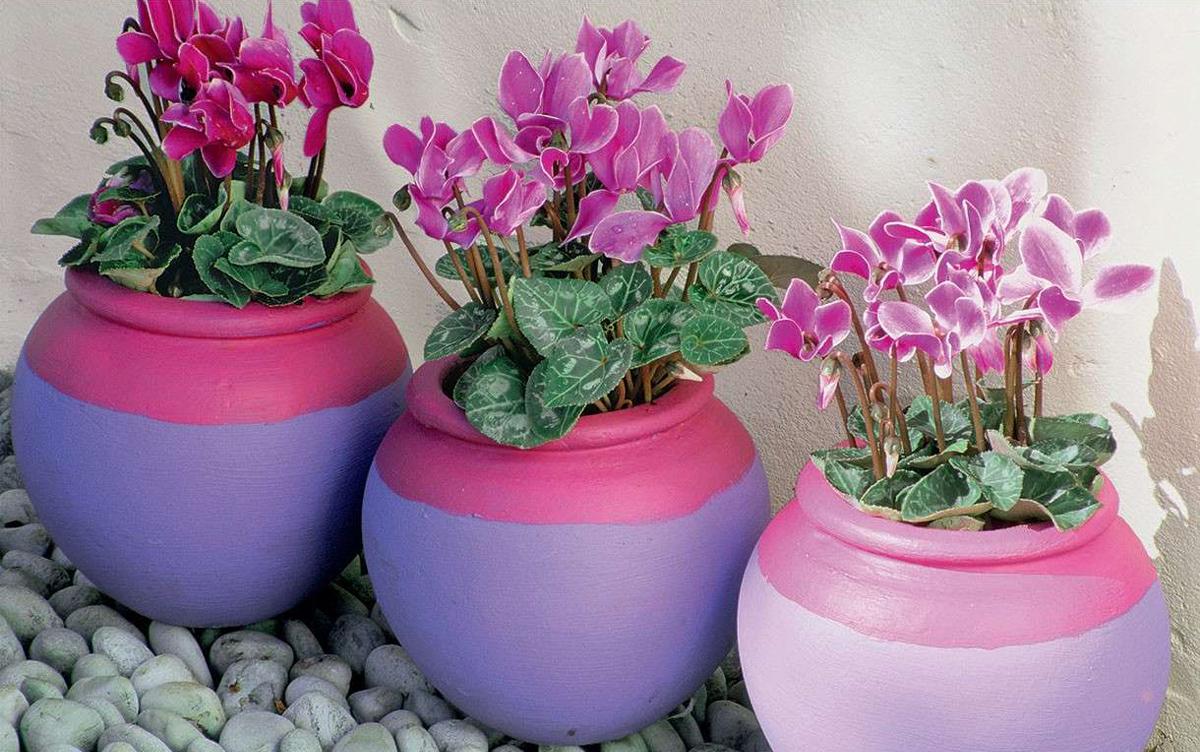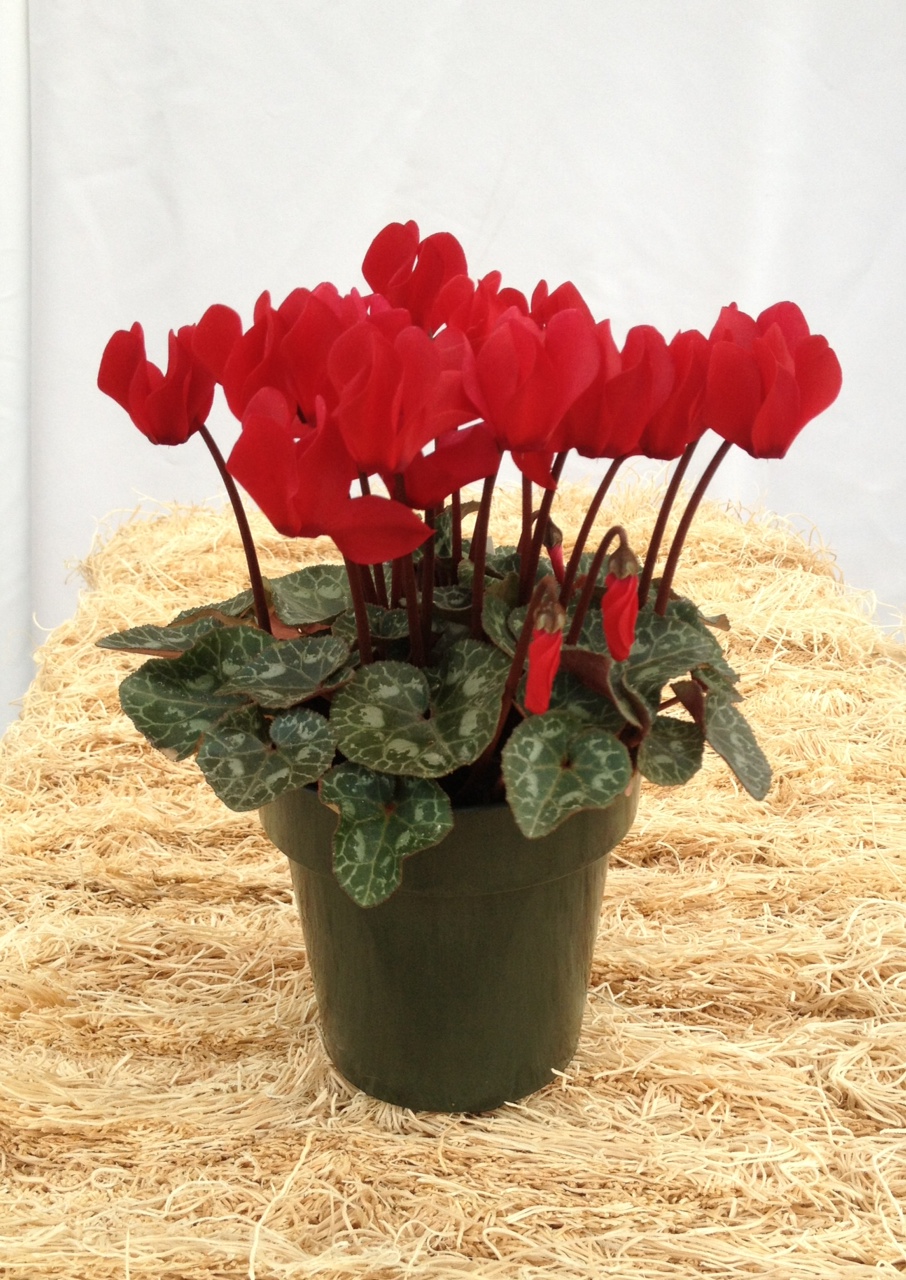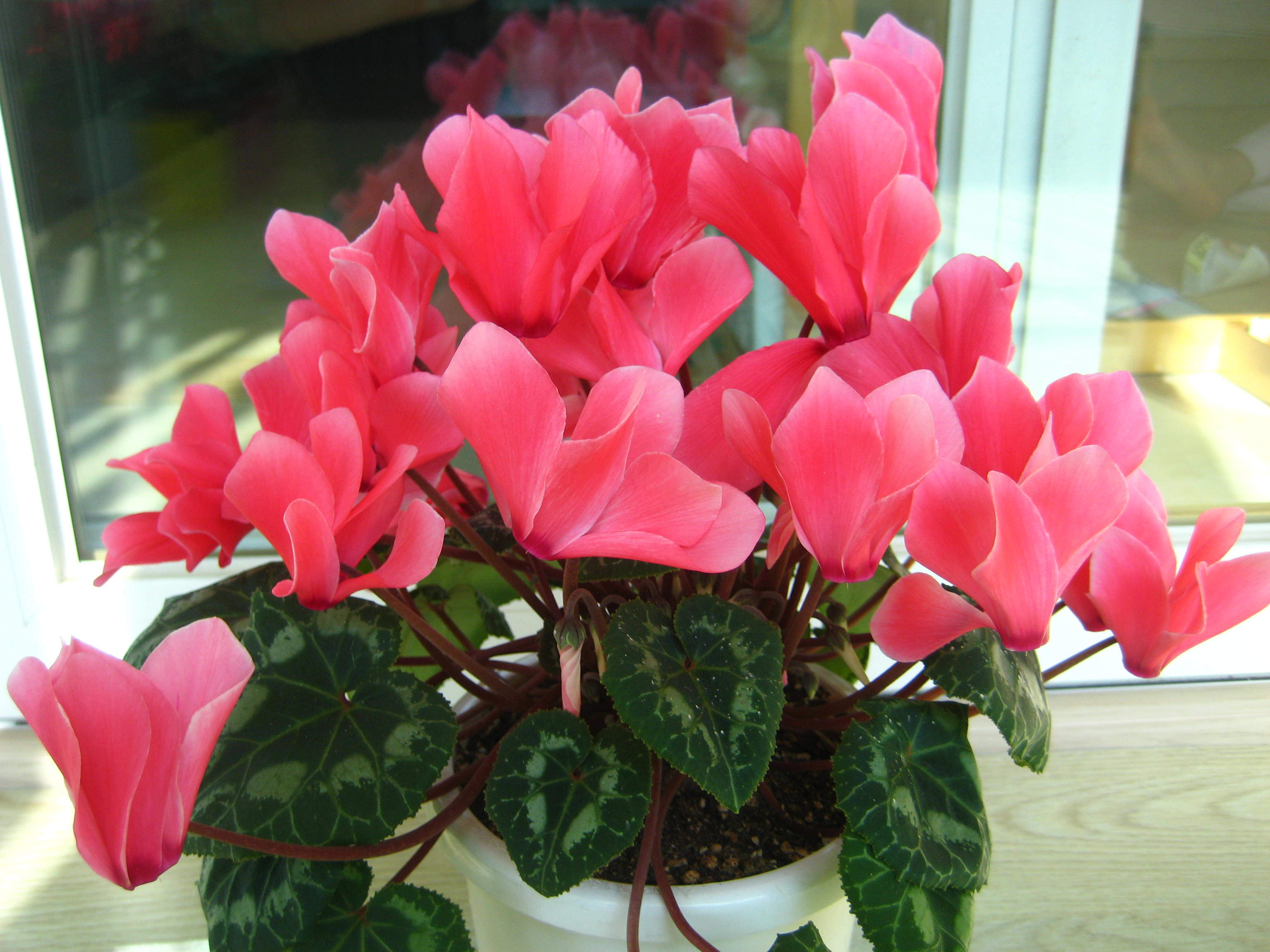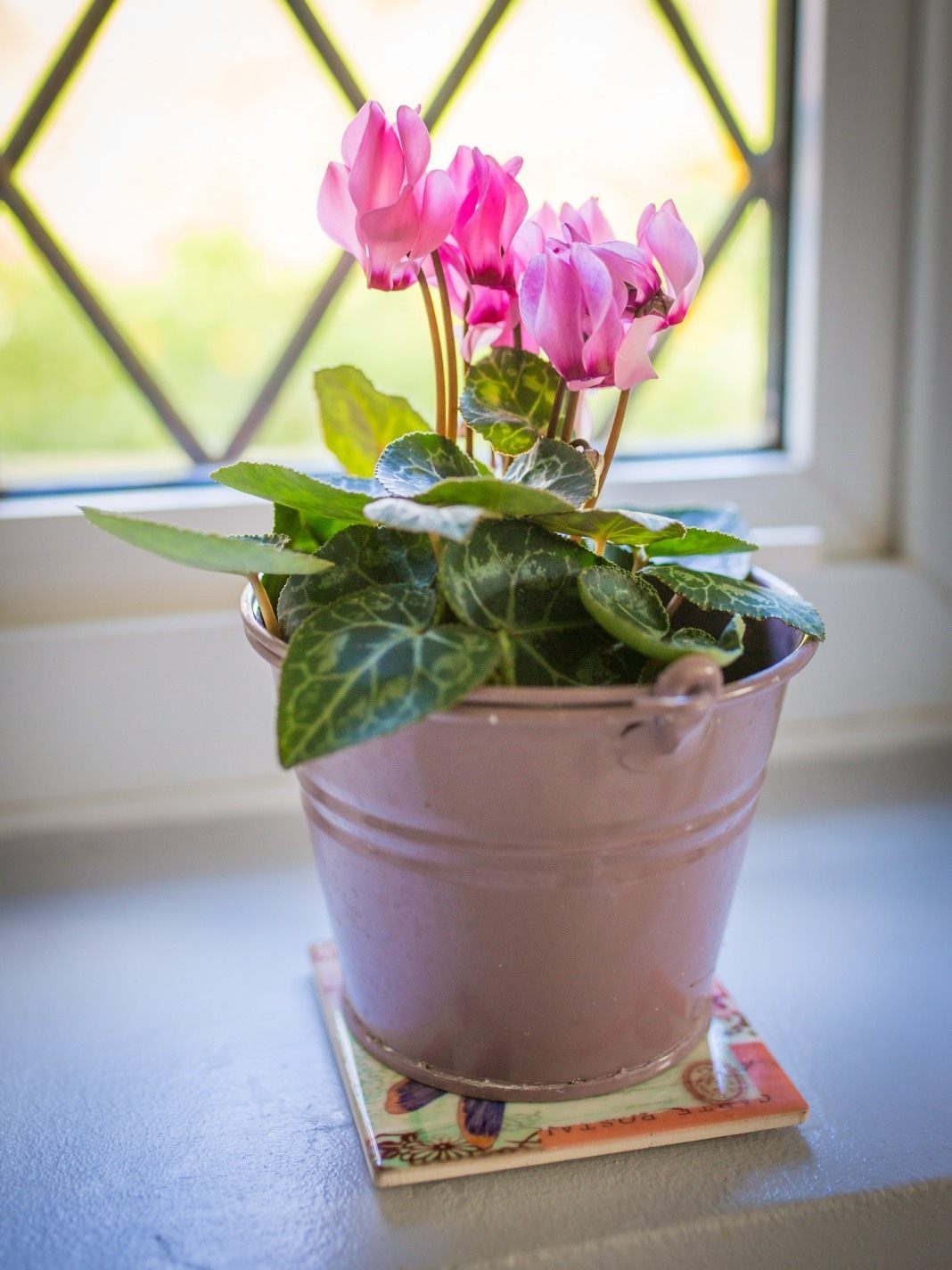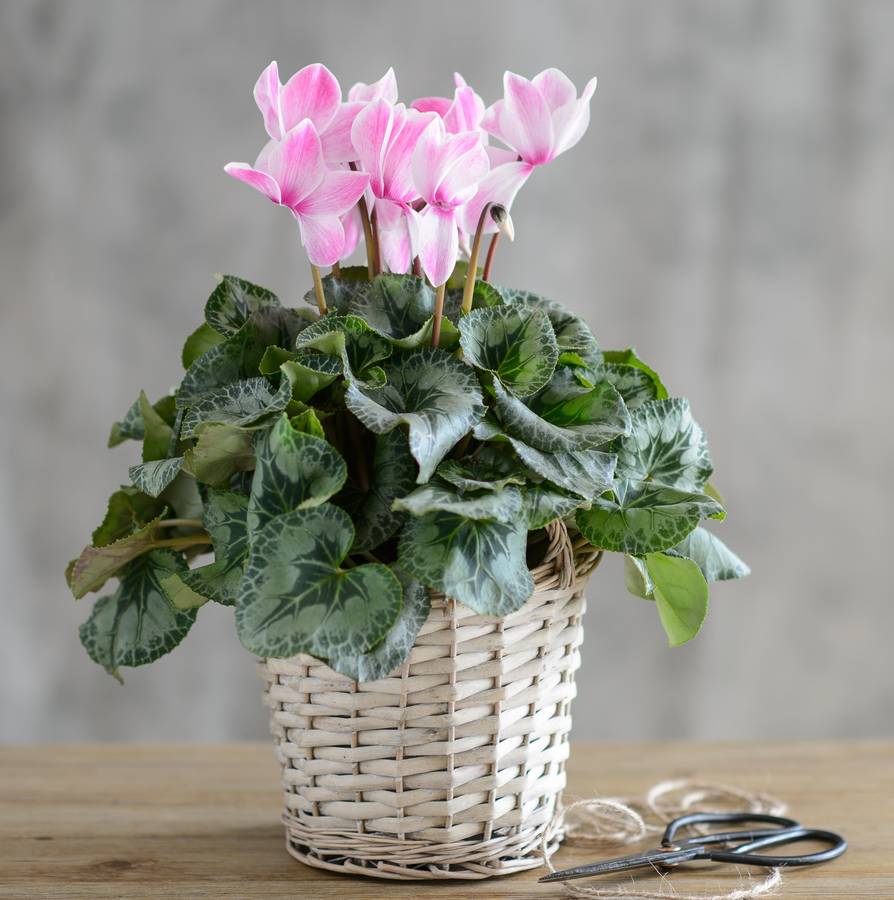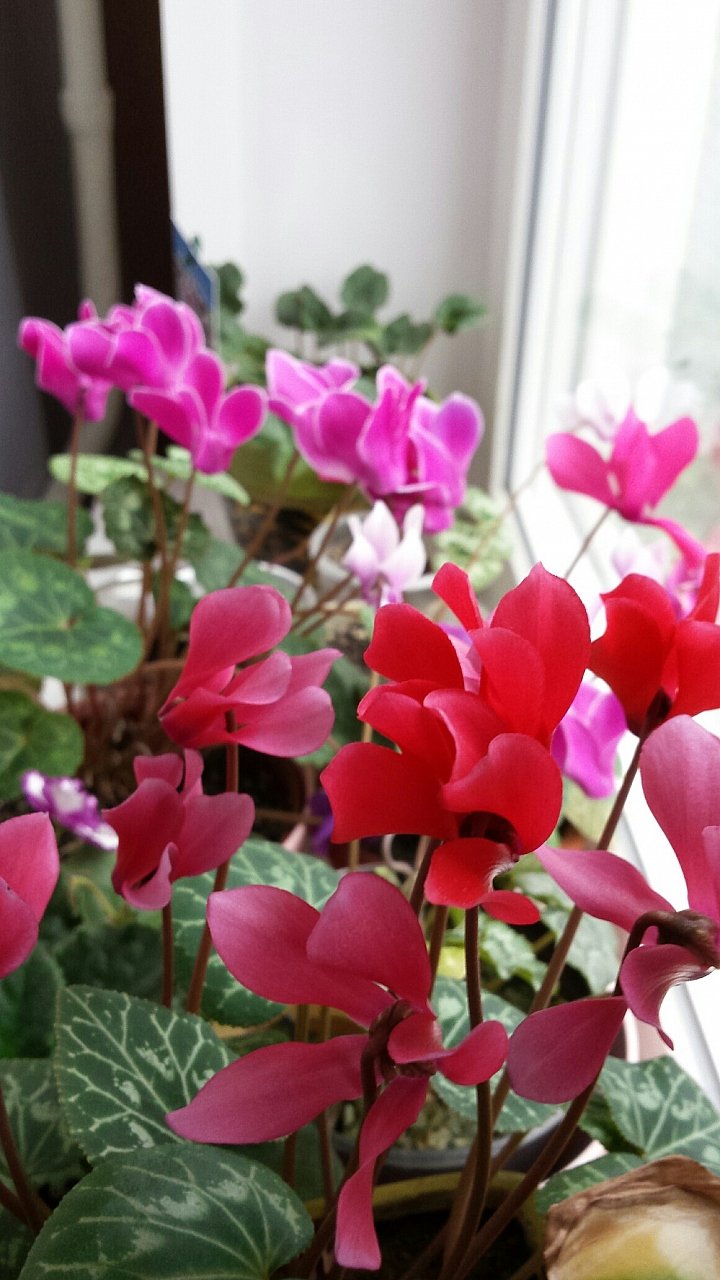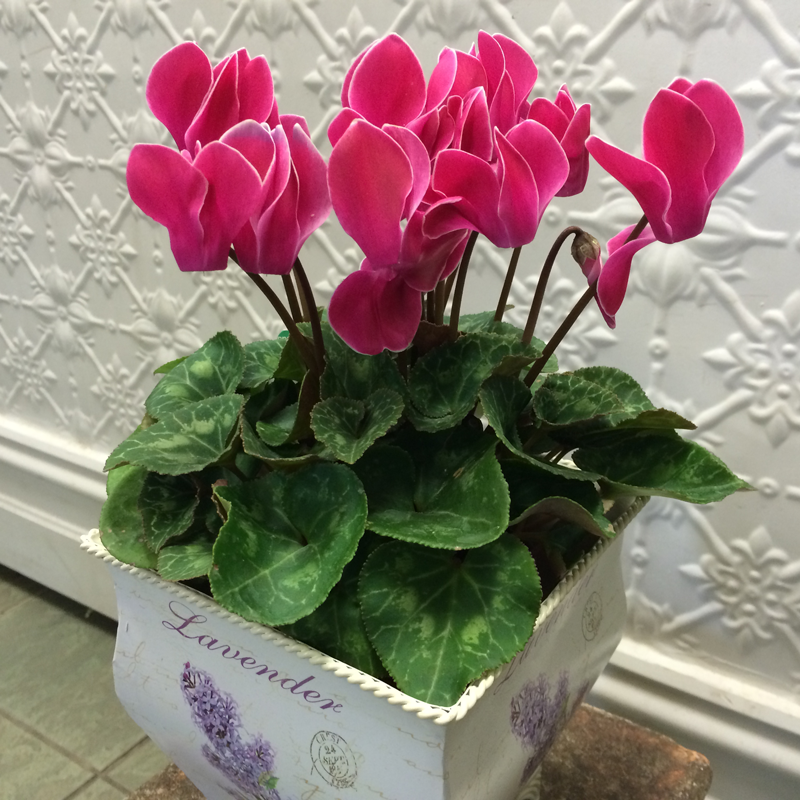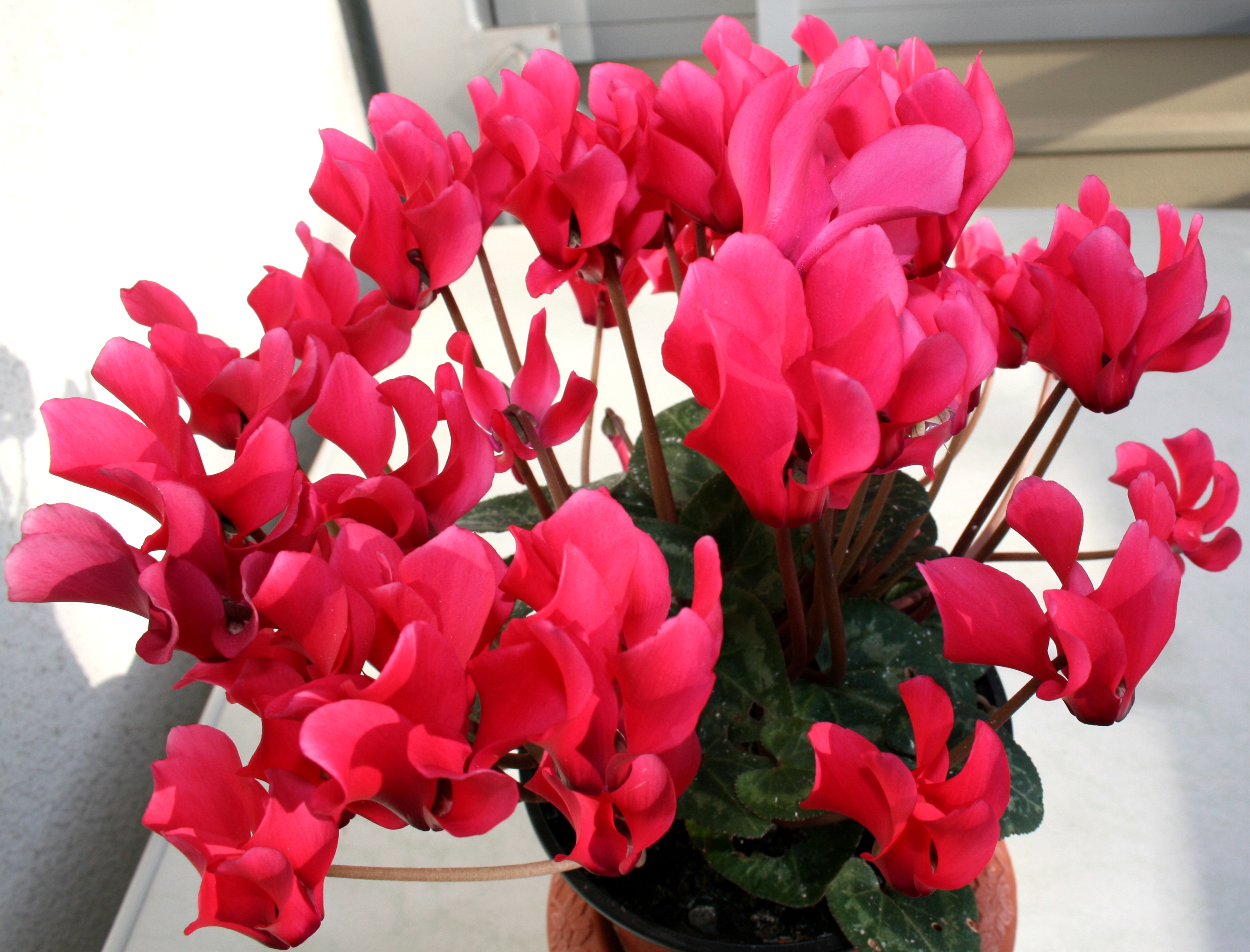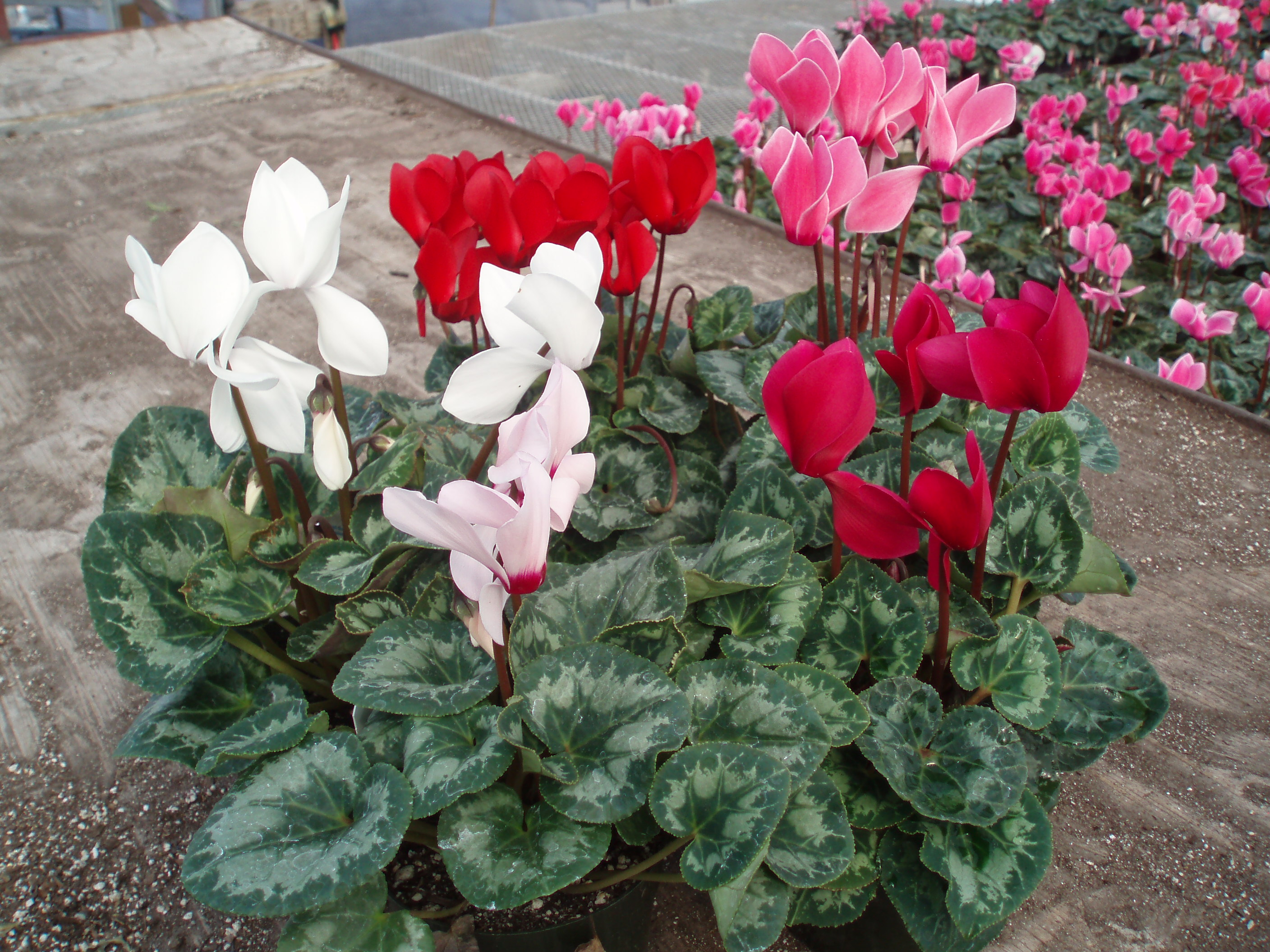Cyclamen home: sunny flower in the interior (20 photos)
Content
Cyclamen, also known as gibberish, "pork bread" or "alpine violet" is a popular herbaceous perennial. "Kyklos" (cyclos) in Greek means "circle" - the root of this plant really resembles a circle. The birthplace of cyclamen is Iran and the countries of central Europe, Asia, and the Mediterranean.
Appearance
Cyclamen home has an attractive appearance. Heart-shaped leaves of the sackcloth are located on long (20-30 cm) raspberry-brown petioles and have a dark green color with silver-gray patterns. Unusual cyclamen flowers have a whole palette of all shades from pale pink to maroon, as well as white. Petals are oval in shape, slightly pointed up.
Depending on the variety, flowering occurs from the end of October to mid-April and lasts 2.5-3.5 months.
Cyclamen tubers have a flattened rounded shape, the diameter of which depends on the variety and age of the plant; he peeks out of the ground a few millimeters. Buds are located on the surface, from which leaves and flowers subsequently grow. After flowering, the tuber is completely exposed, dropping leaves. It is important to know that the juice of the bulb of onion is poisonous and causes skin irritation, redness and inflammation when in contact with the skin.
Variety of cyclamen species
There is a huge variety of varieties of both cyclamen domestic and wild. In total, there are about 50 species of "alpine violets."
Cyclamen Persian
It is he who is considered the ancestor of all cyclamens, the remaining varieties are mistaken for hybrids. The plant has a spherical tuber with a diameter of up to 15 cm, a wide color gamut: the petals are red, pale pink, purple and white. Flowering Persian cyclamen falls at the end of autumn and beginning of spring. The rest period is May-June.
Cyclamen European
It has a number of features that clearly alienate it from other types of cyclamen. So, for example, a plant often has an irregular shape of a tuber covered with roots. In addition, European cyclamen boasts a wonderful aroma, the intensity of which depends on the saturation of the color of the flowers (the brighter the petals, the more pronounced the smell). This variety of gibberish does not drop leaves even after flowering, which lasts from late May to late September.
Cyclamen of Naples
The variety of home alpine violets has an unusual leaf shape for cyclamen: their edges are serrated, reminiscent of ivy. Flowering does not last long, from September to early December. It differs in that flowers grow first, and only after that leaves appear. Neapolitan cyclamen is most resistant to frost. Very negatively reacts to a transplant.
These were the most common varieties of home cyclamen, which can most often be found in flower shops.
Home Care
Beginners and even experienced plant breeders, who first encountered alpine violets, often wonder how to care for cyclamen at home. In fact, this plant is quite unpretentious, it is only important to create cyclamen conditions that are most similar to its natural habitat.
It’s worth starting with creating an ideal home lighting cyclamen. This plant does not tolerate direct sunlight, and yet needs light. It is best to put the crap in penumbra or a zone of scattered light. The western or eastern window is a great place to settle cyclamen there.
It is necessary to observe the temperature and humidity. In the summertime, the temperature range of the thermometer is from + 19 ° to + 24 ° C, in winter the temperature should not exceed + 16 ° C.
Cyclamen does not tolerate heat and dryness, so it is not recommended to place the plant next to the batteries. In a particularly hot period, you need to carefully spray the leaves of the scum, without getting on the tuber and flowers, or put the pot with cyclamen on a tray with wet pebbles or expanded clay.
Overfilling of the soil affects the state of alpine violets more negatively than drying out, because excess moisture leads to rotting of the tuber and the death of the plant. So how to water cyclamen? Watering is done in a pan so that water does not fall on the tuber and shoots. Water is used settled, room temperature.
Dryak happy to take fertilizers and top dressing in moderate dosage. Liquid mineral fertilizers are used during the budding period of a plant after watering no more than once a month.
When and how to transplant cyclamen?
Cyclamen home does not tolerate transplanting, so the longer the plant is in one place, the more plentiful and more often it blooms. A transplant is done only for several reasons:
- closely to the plant, the tuber filled the entire space;
- it is necessary to replace the soil with a new one;
- cyclamen is defeated by diseases, pests are found in the soil.
Without special need it’s not worth “tearing out” the rubbish from an already familiar environment. But if transplantation becomes necessary, it is important to do this extremely carefully and correctly.
Home cyclamen transplant is performed only after the plant has flowered, closer to the state of exit from the "hibernation". You can not transplant cyclamen more often two to three times a year.
Cyclamen home does not like large and very spacious pots. The new one should not be especially larger than the previous one, the edges should not be further from the bulb by more than 2-5 cm.
This plant loves loose soil, so you should pay attention to the soil. It is recommended to shed it with a weak solution of potassium permanganate or steamed. You can buy special prepared soil for cyclamen, or you can prepare it yourself. To do this, they take soil and organic matter (sheet soil, humus, coconut fiber, etc., as well as coarse sand) in a ratio of 1: 1. At the bottom of the pot put a layer of drainage, consisting of expanded clay, crushed stone, granite, pebbles, etc.
It must be remembered that it is impossible to dig a tuber in any case. On the surface of the earthen mixture should be its third-half. It is very important to observe the temperature regime, air humidity and regular watering after transplantation.
Propagation of cyclamen at home
There are two ways to propagate cyclamen home: tuber division or seed. However, the reproduction of gibberish is not an easy task, you will have to work hard. So, for example, the first problem may be the fact that many varieties share only seeds, the receipt of which is achieved by patience, prudence and accuracy.
To obtain cyclamen from seeds at home, the breeder will have to stay in the role of a pollinating bee: during flowering with a soft brush or cotton bud, pollen is transferred from one flower to another. To obtain the result, the procedure is repeated several times. Shortly before opening the capsule, cyclamen seeds are taken out and soaked for a day in a zircon solution, after which they are planted in soil for growing seeds. You do not need to deepen the seeds, just put them on the ground and sprinkle with a layer on top. However, there is an easier way: in specialized stores, ready-made cyclamen seeds are often sold.
Cyclamen can be propagated at home in another way - vegetative, division of the tuber. The procedure is carried out only during the rest period of cyclamen. The tuber is cut into several parts, each of which must have a kidney and roots. "Delenki" is dried for several days, processing slices with crushed wood or activated carbon, after which they are planted in separate pots, completely dusting with a thin layer of earth.
And remember, even if you observe all the conditions for the propagation of cyclamen, this does not give an absolute probability of success.
Cyclamen cultivation
Depending on the method of propagation, cyclamen is grown from seeds and from tubers. Each of the types of transformation of a part of a plant into a full-fledged flower requires effort and special care.
When growing cyclamen from seeds, you need to create a small greenhouse immediately after planting. A container with seedlings is watered a little and covered with a plastic wrap. The optimum temperature for the cultivation of squandered seeds is approximately equal to + 20 ° C. It is important to regularly water and ventilate the seedlings.
After a month and a half, sprouts appear, the landing needs to be moved to a cooler, but no less bright place. As soon as the seedlings grow small tubers and 3-4 leaves, they need to be transplanted into separate pots. Cyclamen grown from seed begins to bloom only after one and a half to two years after emergence from a sprout.
Growing cyclamen from a tuber is not so simple, because in most cases the bulb rots. However, in order for the attempt to succeed, all breeding conditions must be met. Immediately after planting, the tuber is lightly watered and a greenhouse is created, covering the pot with a plastic glass or film. After 3-6 weeks, small sprouts appear, which should be grown by analogy with sprouts grown from seeds. Cyclamen, grown from a tuber, begins flowering in a year and a half.
Problems and Features
Some problems in growing cyclamen can surprise even experienced gardeners. Each of them often lies in improper care.
If cyclamen wilts, the leaves turn yellow. The problem of yellowing of leaves and wilting of cyclamen home can occur for several reasons: lack or absence of moisture in the soil or air, starvation, pests or lack of space. How to save cyclamen? It is necessary to transplant the plant into a large pot with completely renewed soil, make proper watering and complementary foods, and also make sure that all conditions for caring for the horseradish are met. Cyclamen also turns yellow after flowering, in which case this is considered normal.
Home cyclamen is one of the most amazing, beautiful and unpretentious plants, which will be an excellent gift and decoration in every apartment and garden. Observing all the conditions for proper care of alpine violets, the flower grower will undoubtedly be awarded the bewitching flowering of this plant.
